Battling Deforestation: Solutions for a Greener Earth
The delicate balance of our planet’s ecosystems is threatened by deforestation. It’s a major worldwide issue that puts biodiversity and climate stability in jeopardy while combating several deforestation solutions.
Widespread forest clearing for logging, agriculture, and urbanization has harmed the ecosystem. It includes increased greenhouse gas emissions, habitat loss, and water cycle disruption.
However, a glimmer of hope appears in the shape of comprehensive remedies that deal with the underlying causes of deforestation.
Table of Contents
These solutions aim to repair and protect the essential ecosystems that support life on Earth. Let’s dive into these deforestation solutions in addition to stopping the destructive trend through collective efforts.
Reforestation and Afforestation
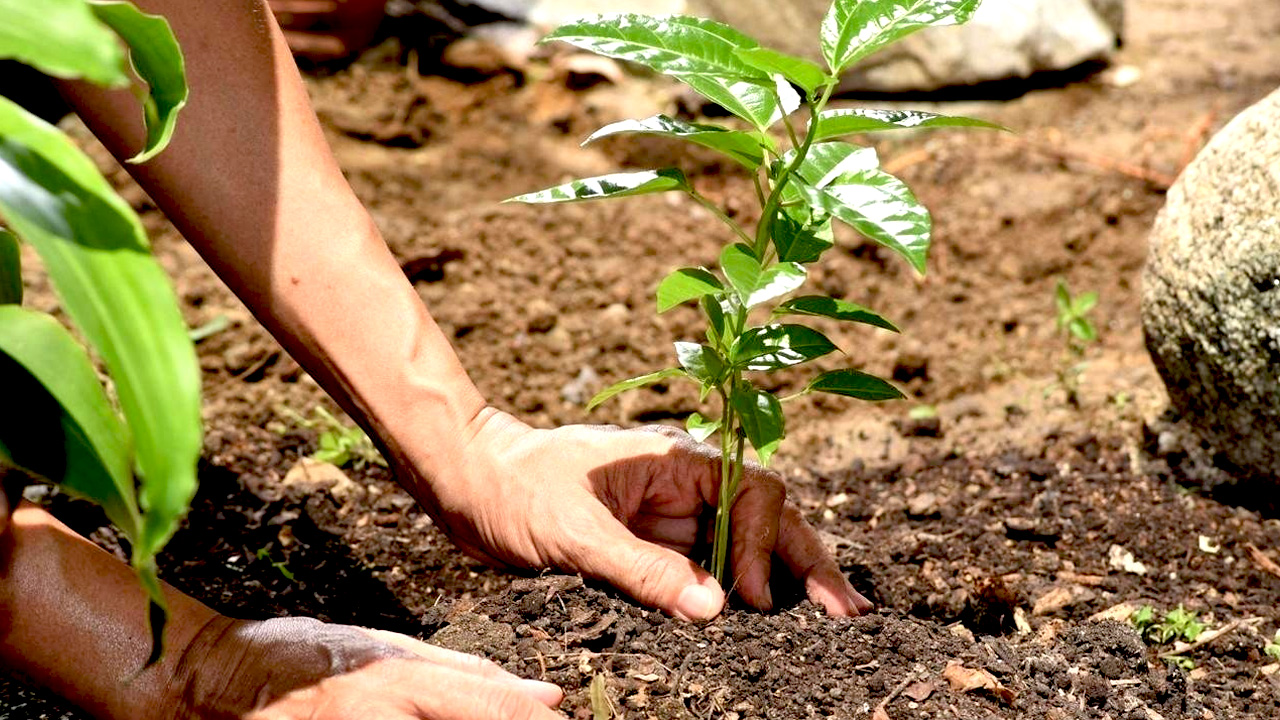
Afforestation and reforestation act as potent forces for our valuable forests. It can counteract the wounds caused by deforestation through several solutions.
Reforestation
Replanting trees in places where forests have been destroyed by several causes is known as reforestation. This assists in rebuilding habitats for numerous species that have been living in the natural habitats.
It helps, in addition to aiding in the restoration of the ecological equilibrium of our planet. Natural carbon sink trees take up and store carbon dioxide from the atmosphere, aiding in oxygen balance in the air.
Reforestation lowers greenhouse gas concentrations by absorbing CO2 back into trees. It greatly aids in climate change mitigation and helps restore biodiversity, adding to deforestation solutions.
Another explanation might be that a major factor in halting soil erosion is trees. Their root systems stabilize the ground, which lessens the possibility of landslides and preserves the land’s fertility.
Related Pick: Afforestation vs Reforestation: What’s the Difference?
Afforestation
Afforestation is the deliberate act of creating new forests by introducing vegetation to areas that may have lacked forest cover for an extended period or were devoid of it entirely.
This proactive strategy significantly contributes to the expansion of our forested lands. Afforestation plays a crucial role in fostering biodiversity.
By introducing diverse plant and animal species to new habitats, it contributes to the establishment of varied ecosystems. This, in turn, enhances the overall health of the environment.
Forests positively impact human well-being, and afforestation initiatives near urban areas can have particularly beneficial effects. These efforts not only improve air quality but also create recreational spaces. It may positively influence the physical and emotional well-being of individuals.
Causes of Deforestation: Human Choices & Environmental Impact
As we explore the causes of deforestation, we recognize the impact of our actions on the landscapes that breathe life into our world.
Sustainable Logging Practices
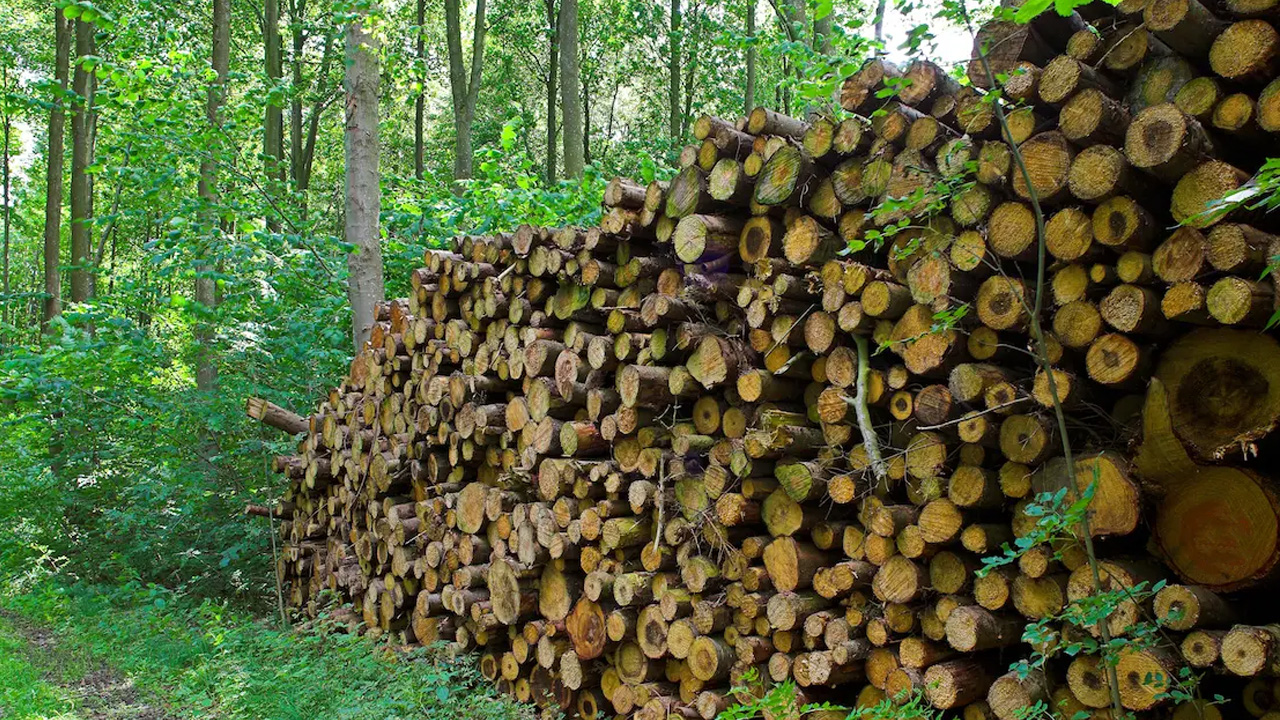
Sustainable logging practices are a vital component in balancing the demand for timber and conservation. Rather than a blanket opposition to logging, the focus shifts toward responsible and environmentally friendly deforestation solutions.
Selective Logging
Selective logging involves harvesting only specific tree species and sizes, leaving most of the forest intact. This helps preserve the overall structure and function of the ecosystem by carefully choosing which trees to cut.
This approach prevents the negative impact of clear-cutting on various plant and animal species. These species depend on diverse forest environments.
Long-term Resource Management
Adopting sustainable logging recognizes the importance of long-term resource management. Companies that adapt to these practices have efficient resources in the long run.
They understand that a healthy forest is not just a source of immediate profit but an invaluable asset. And it must be preserved for future generations.
Reducing Waste and Impact
Sustainable logging also emphasizes efficient resource utilization by minimizing waste during the logging and processing stages.
Technology and best sustainable practices can be implemented to minimize the environmental impact of logging activities. Such practices include reducing soil disturbance and protecting water quality.
Agroforestry
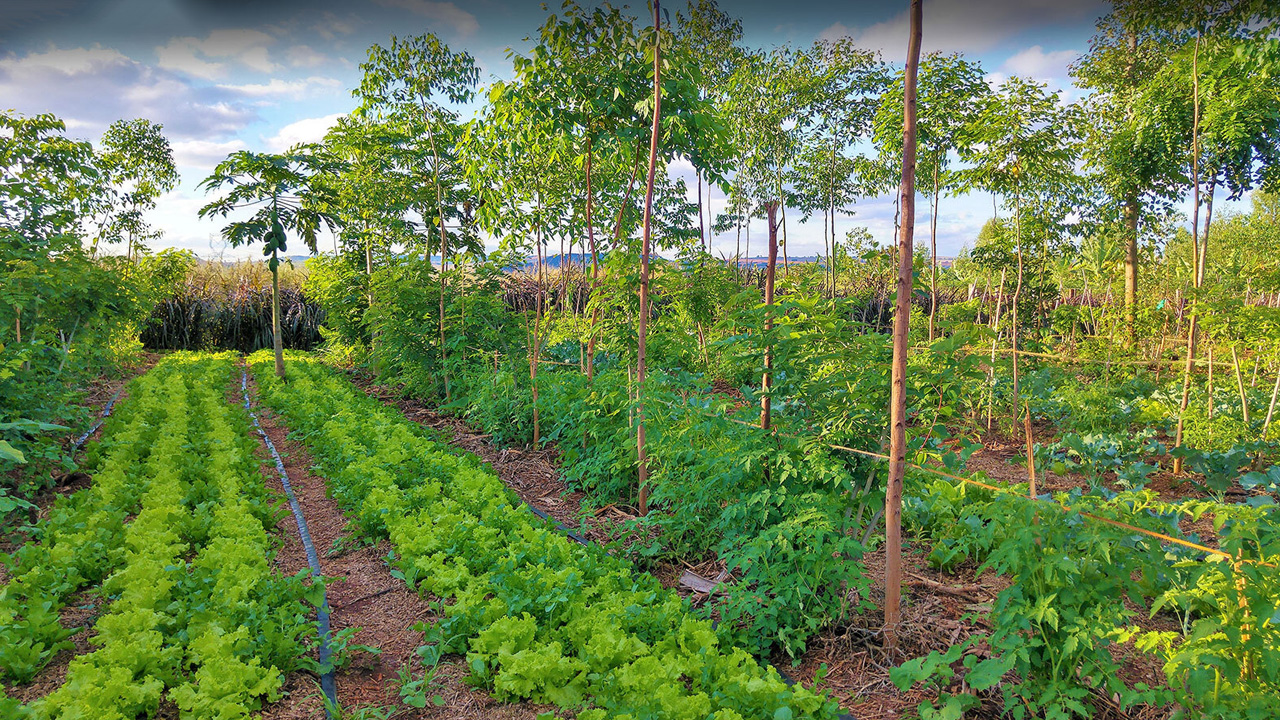
Agroforestry is a method that combines agricultural techniques with trees to create landscapes that are both multipurpose and sustainable.
Diversified Land Use
Growing crops and trees on the same land at the same time is called agroforestry.
This diversification maximizes land use. It supports a more robust and productive ecosystem for natural habitats. The coexistence of crops and trees facilitates the efficient use of natural resources.
It can include nutrient cycling, shade provision, prevention of soil erosion, and increased productivity overall.
Economic Benefits for Farmers
Diversifying crops and adding trees help reduce the risks associated with erratic weather, pests, and market swings.
It also gives farmers other revenue streams through the sustainable harvesting of tree products. Such as fruits, nuts, and lumber.
Environmental Conservation
Agroforestry systems benefit from the preservation of soil. Prominently through the prevention of erosion, enhancement of soil structure, and reduction of nutrient runoff.
They also support pollinators, natural pest control, and biodiversity. By providing a variety of habitats for different plant and animal species.
Community Engagement
Agroforestry engages local communities in sustainable land management. Primarily by encouraging a sense of environmental ownership and responsibility.
Knowledge of agroforestry practices is traditionally shared within communities. It helps preserve important ecological wisdom that maintains biodiversity balance.
Immersive Beauty: Unveiling the Enchanting Wonders of the Amazon Rainforest
The Amazon rainforest is a wet broad forest in the Amazon biome spread over 6.7 million km² that covers most of the Amazon basin of South America…
Corporate Responsibility

In the context of deforestation, corporate responsibility entails businesses taking proactive steps of solutions. To guarantee that their operations are socially and environmentally responsible. It contributes to the overall health of the planet.
Zero-Deforestation Policies
Companies committed to corporate responsibility often take steps to ensure supply chain transparency. It includes tracking the origin of raw materials. Particularly those derived from forests to guarantee sustainable sourcing.
Support for Conservation Initiatives
Corporate social responsibility can involve providing funding for reforestation projects. It also involves funding for conservation initiatives or organizations.
This funding supports the preservation of natural habitats. Working with non-governmental organizations (NGOs) focuses on environmental conservation. It enables corporations to actively participate in conservation efforts.
Ethical Business Practices
In areas inhabited by indigenous people, corporations must respect their rights. They obtain their consent and ensure just compensation for the use of their land.
Additionally, corporate social responsibility can involve promoting community development. It supports local economies that are impacted by business operations.
Technology and Monitoring

Harnessing advanced technology for monitoring and managing forests is a pivotal strategy against deforestation.
Satellite Technology
Satellites provide a bird’s-eye view of forests, enabling real-time monitoring of deforestation activities. This technology allows for early detection of illegal logging, land clearance, and changes in forest cover.
Advanced analytics applied to satellite data can reveal patterns and trends, facilitating more informed decision-making in forest management.
Remote Sensing Tools
Aerial surveys using drones provide high-resolution imagery, helping to monitor forests in areas that may be challenging to access. Drones are particularly useful for rapid assessment and response to illegal activities.
Geographic Information System (GIS)
GIS allows for the integration and analysis of spatial data related to forest cover, land use, and biodiversity. This information is instrumental in identifying areas at risk and planning conservation strategies.
GIS-based decision support systems assist policymakers and forest managers in making informed decisions by visualizing complex data in an understandable manner.
Blockchain Technology
Blockchain can be employed to create transparent and traceable supply chains for forest products. This ensures that timber and other commodities are sourced sustainably and ethically.
Smart contracts on blockchain platforms can automate and enforce agreements related to responsible logging and adherence to conservation practices.
Artificial Intelligence (AI) and Machine Learning
AI and machine learning algorithms can analyze historical data to predict potential deforestation hotspots. This allows for targeted intervention and preventive measures for deforestation solutions.
Related Pick: Artificial Intelligence carbon emissions
AI-powered systems can automate the analysis of satellite imagery, flagging areas of concern and reducing the time between detection and response to illegal activities.
Community-based Monitoring
Engaging local communities in monitoring efforts can be facilitated through user-friendly mobile applications. These applications enable members to report suspicious activities and contribute to data collection.
Training local communities to use and benefit from monitoring technologies enhances their ability to actively participate in forest protection.
Education and Awareness
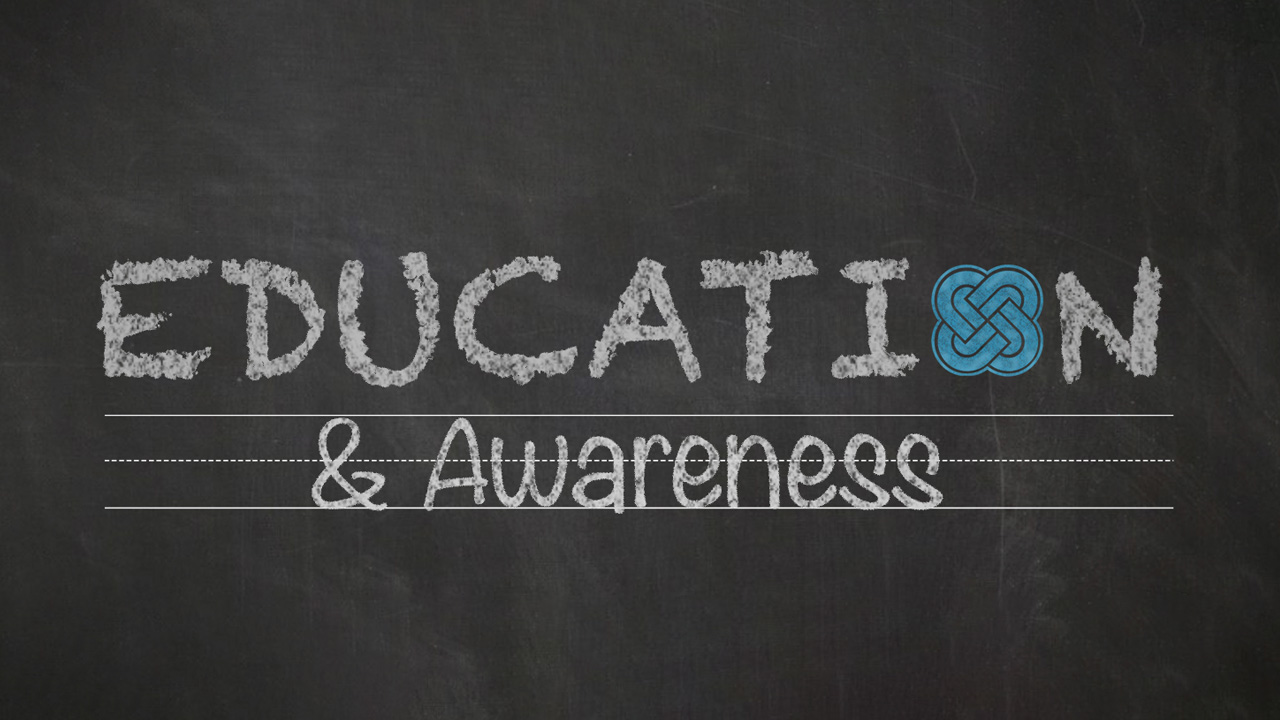
Education and awareness initiatives play a crucial role in the global fight against deforestation. It empowers individuals and communities with the knowledge to make informed decisions.
Environmental Education Programs
Including environmental education in school curricula ensures that future generations understand the importance of forests, biodiversity, and the impact of deforestation.
Practical, hands-on activities, such as tree planting and nature excursions, enhance the learning experience and foster a connection to the environment.
Community Outreach and Workshops
Tailoring education programs to the specific needs and cultural contexts of local communities ensures relevance and engagement. Interactive workshops and seminars facilitate open discussions about the consequences of deforestation and the importance of sustainable solutions.
Media Campaigns
Engaging documentaries and films can effectively communicate the impact of deforestation to a broad audience, raising awareness and inspiring action.
Leveraging social media platforms for targeted campaigns amplifies the reach of educational messages, encouraging a wider audience to participate in conservation efforts.
Public Service Announcements (PSAs)
Short, impactful PSAs on television and radio channels can convey essential messages about deforestation, conservation, and individual responsibility.
Involving influential personalities in PSAs can significantly enhance the visibility and effectiveness of awareness campaigns.
Adult Education Programs
Implementing adult education programs ensures that individuals of all ages have access to information about sustainable living. Establishing learning centers within communities provides ongoing educational resources and support.
Partnerships with NGOs and Academic Institutions
Collaborating with non-governmental organizations (NGOs) and academic institutions allows for the integration of up-to-date research findings into educational materials.
Organizing field trips and experiential learning opportunities enables participants to witness the effects of deforestation and conservation efforts firsthand.
Corporate Social Responsibility (CSR) Programs
Integrating environmental education into CSR programs ensures that employees are knowledgeable about sustainable practices, both at work and in their personal lives.
Corporations can use their platforms to raise awareness about deforestation, leveraging their influence to reach a broader audience.
Explore the Impact: Effects of Deforestation on Earth
In this journey, we’ll explore the effects of deforestation. Such as turning pages in a book that reveals how cutting down trees connects to things like climate change.
Government Policies

Government policies play a pivotal role in shaping the approach to deforestation. It provides a regulatory framework and incentives for sustainable land use and forest management.
Land Use Planning
Governments can implement zoning regulations that designate specific areas for conservation. These areas involve agriculture and urban development, ensuring a balanced and sustainable use of land.
Coordinating land use planning at regional and national levels helps create a comprehensive strategy. It considers ecological, social, and economic factors.
Protected Area Designation and Expansion
Designating new national parks and reserves preserves critical ecosystems and enhances biodiversity conservation.
Governments can expand existing protected areas to cover larger areas deemed ecologically significant.
Community Land Rights and Engagement
Governments should recognize and protect the land rights of indigenous communities. It involves them in decision-making processes related to forest management.
Supporting community-based conservation initiatives empowers residents. To actively participate in preserving their natural environment.
Strict Legal Frameworks
Strict legal frameworks must be established and strictly enforced. In order to stop the widespread problem of deforestation.
Governments are essential to this because they enact regulations. That expressly prohibits illicit logging and unapproved land clearance.
The enforcement system’s equality guarantees that firms and individuals found guilty of breaking these rules face consequences. Illegal deforestation can be considerably reduced by legal deterrents.
International Collaboration

Deforestation requires coordinated efforts on a global scale. International collaboration involves cooperation between nations and stakeholders. To implement strategies that transcend geographical boundaries.
Knowledge Sharing and Capacity Building
Collaborative research projects between countries contribute to a deeper understanding of deforestation. It facilitates more effective conservation strategies.
International collaboration supports capacity-building in developing nations. It empowers them with the knowledge and skills needed for sustainable forest management.
Multilateral Agreements
Global agreements reinforce a shared commitment to address climate change and biodiversity loss. Such as the Paris Agreement and the Convention on Biological Diversity.
Nations can engage in and support international forestry conventions. It fosters a unified approach to sustainable forest management.
Financial Support and Aid
Wealthier nations can provide financial support and aid to developing countries. Specifically for conservation and reforestation projects. It helps acknowledge the shared responsibility for global environmental well-being.
Innovative financial mechanisms allow countries to exchange debt relief for commitments. Such as debt-for-nature swaps to invest in conservation efforts.
Technology Transfer
Developed nations can assist developing countries in acquiring and implementing advanced monitoring technologies. It enhances their ability to combat illegal logging and deforestation through several solutions.
Collaborative efforts can focus on building technological capacity in developing nations. It ensures sustainable and effective use of available tools.
Cross-Border Law Enforcement
International collaboration strengthens law enforcement efforts against transnational illegal logging activities. It promotes the sustainable use of forest resources.
Sharing intelligence and information about such activities enhances the ability of nations to coordinate responses. It helps collaboratively in the deforestation solutions.
Global Initiatives for Reforestation
Participating in global initiatives demonstrates a collective commitment to large-scale reforestation efforts. Such as the Bonn Challenge and the New York Declaration on Forests.
Nations can pool resources to support reforestation projects. Specifically, in regions facing significant deforestation solutions.
Financial Incentives

Financial incentives are an effective means of motivating people, companies, and communities. They facilitate active engagement in sustainable practices and forest protection.
Payment for Ecosystem Services (PES)
PES programs reward landowners for maintaining or restoring ecosystems by providing essential services. Such as carbon sequestration, water purification, and biodiversity conservation.
PES values environmental services and urges landowners to choose conservation over practices that worsen the state of the forest.
Subsidies for Sustainable Practices
Governments shall provide financial aid to farmers engaged in sustainable agriculture, or agroforestry. It integrates tree cover and preserves natural equilibrium.
Financial support for these practices encourages businesses to adopt responsible forestry methods. Such methods involve selective logging and reforestation commitments.
Tax Credits and Deductions
Governments have the authority to offer landowners tax credits or deductions for their participation in conservation efforts. It also provides a tax for reforestation or sustainable land management practices.
Businesses that embrace environmentally friendly practices may also be eligible for tax benefits. These practices involve responsible forestry and sustainable sourcing in recognition of their conservation efforts.
Green Bonds and Sustainable Investments
These are financial instruments that direct funds toward ecologically friendly projects, such as reforestation and conservation initiatives.
They encourage private investors to prioritize sustainable projects. By offering financial instruments that align with environmental conservation goals.
Carbon Markets and Credits
Engaging in carbon markets enables organizations to exchange carbon credits. This is achieved by offering monetary compensation for projects that lower or absorb carbon emissions.
Carbon credits can be generated by reforestation and conservation efforts. It provides a financial incentive for the preservation and restoration of forests.
Community-Based Revenue Sharing
By establishing community forest enterprises, local communities can make money through sustainable forestry practices, offering an alternative to deforestation.
Developing revenue-sharing models ensures that communities benefit economically from conservation efforts. It ultimately fosters a sense of ownership and commitment.
Community-Based Ecotourism
Promoting ecotourism initiatives allows local communities to derive economic benefits from their natural surroundings. And that is without resorting to destructive land-use practices.
It can create employment opportunities, support livelihoods for communities, and reduce dependency on activities leading to deforestation by implementing solutions.
Land Use Planning
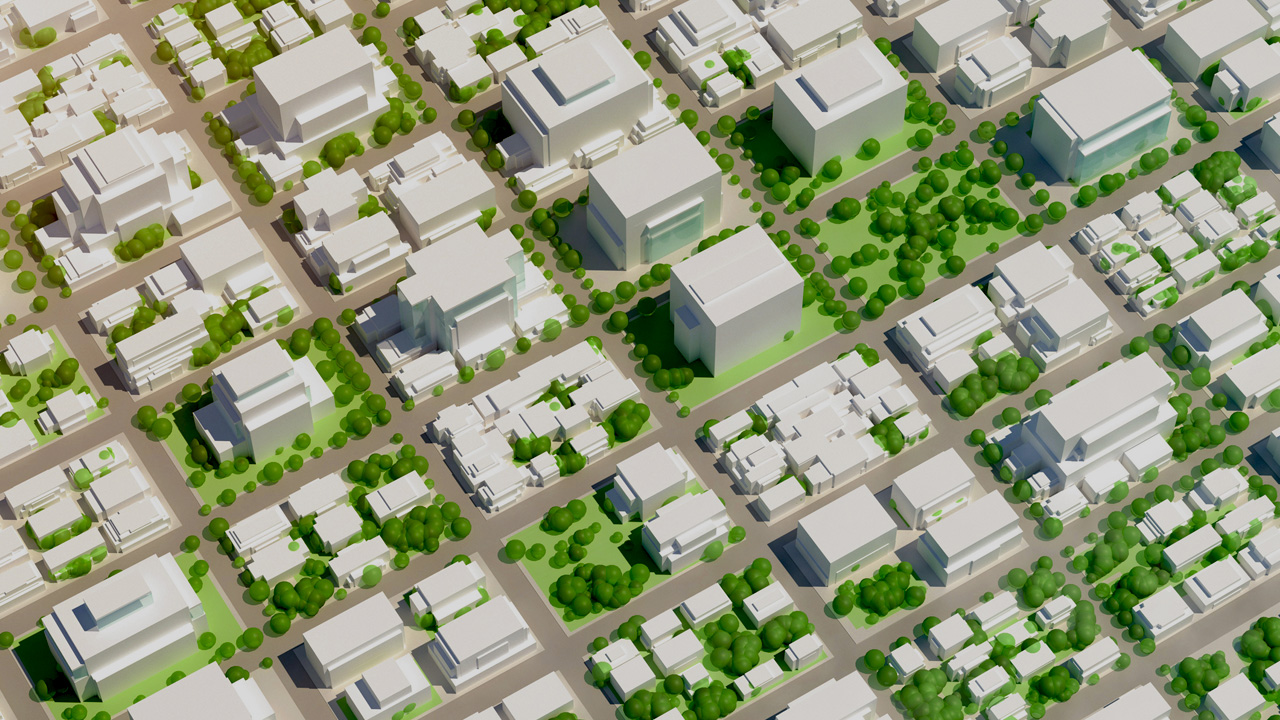
A key component of sustainable forest development is efficient land use planning. It makes sure that human activities balance with the need to preserve and safeguard important ecosystems.
Zoning Regulations
Land use planning involves the designation of zones with a focus on preserving ecological areas. Such as old-growth forests, wetlands, and biodiversity hotspots.
These regulations create a balance between urban development, agriculture, and conservation. To help prevent uncontrolled expansion into critical natural habitats.
Integrated Planning
Integrated land use planning takes a holistic approach, considering ecological, social, and economic factors. This ensures that development must be enhanced without compromising environmental sustainability.
Collaboration between forestry, agriculture, and urban development promotes a cohesive strategy for multiple objectives.
Protection of Watersheds and Riparian Areas
Land use planning includes measures to protect watersheds and riparian areas. It also involves preserving water quality and a sustainable supply for both human and natural systems.
Buffer zones along water bodies prevent soil erosion, riverbanks, and sedimentation that can harm aquatic ecosystems.
Urban Green Spaces
Planning for urban green spaces and infrastructure within cities enhances the quality of life for residents. It provides essential habitats for the flora and fauna of the ecosystem.
Green spaces contribute to climate resilience by mitigating the urban heat island effect. It improves air quality and offers recreational opportunities for deforestation solutions.
Wildlife Corridors
Land use planning identifies and protects wildlife corridors. It enables the movement of species between fragmented habitats. This helps maintain genetic diversity and supports healthy ecosystems.
Wildlife corridors reduce the risk of species extinction and enhance the overall resilience of ecosystems. They do that by preventing the isolation of habitats.
Climate-Resilient Agriculture
Planning for climate-resilient agriculture involves selecting crops suited to changing climatic conditions. It also implements practices that reduce vulnerability to extreme weather events.
Introducing sustainable land management practices ensures that agriculture coexists with forest conservation. These practices involve agroforestry and soil conservation measures.
Public Participation
Effective land use planning involves the active participation of local communities. This ensures that planning decisions reflect the needs and aspirations of those directly affected by land-use changes.
Engaging communities in the planning process includes sharing knowledge about the importance of forests and the consequences of deforestation. This is mandatory for participating in deforestation solutions.
Adaptive Management
Land-use plans should be flexible and adaptable to changing circumstances. It should include evolving environmental conditions and the emergence of new information.
Regular monitoring and assessment of land use practices allow for adjustments and improvements. By ensuring that plans remain effective in achieving conservation goals.
Protected Areas and Reserves
Designating and expanding protected areas and wildlife reserves are crucial solutions in the battle against deforestation. These areas act as sanctuaries for diverse ecosystems.
Expanding such protected areas is a proactive step towards conserving our natural heritage. It involves identifying critical ecosystems that need preservation and extending the boundaries of existing reserves.
This not only protects individual species but also contributes to the overall health of the planet by mitigating climate change and sustaining essential ecosystem services.
Capacity Building

Capacity building is a multifaceted strategy that empowers individuals, communities, and organizations. It fosters the knowledge, skills, and resources needed to actively participate in forest management and conservation efforts.
Training Programs
Capacity building involves training programs that educate individuals on sustainable forestry practices. It includes reforestation techniques, selective logging, and ecosystem management.
Training in the use of advanced technologies enhances the capacity to monitor and manage forests effectively. Such as GIS (Geographic Information System) and remote sensing tools must be known to trainees.
Community Empowerment
Building the capacity of local leaders within communities fosters a sense of ownership and responsibility for forest conservation. It includes training in conflict resolution skills, enabling communities to address challenges related to land use and resource management collaboratively.
Environmental Education
Environmental education programs contribute to building a generation that understands the importance of forests. Incorporating outdoor learning experiences connects students with nature and promotes a deeper appreciation for ecosystems.
Technical and Vocational Training
Technical and vocational training programs equip individuals with practical skills for sustainable forest management. It includes tree planting, silviculture, and fire prevention.
Capacity building includes imparting entrepreneurial skills and encouraging people to engage in sustainable businesses related to forest products or eco-tourism.
Financial Literacy and Funding Access
Training in financial management enhances the ability of communities and organizations to effectively use funds allocated for conservation projects.
It includes skills development in grant writing and fundraising, enabling entities to access financial resources for conservation initiatives.
Continuous Learning and Adaptation
Adaptive management principles’ training ensures that individuals and organizations can respond effectively to changing environmental conditions.
Developing research skills allows communities to contribute to the generation of new knowledge about local ecosystems and conservation strategies.
Green Infrastructure Development

It involves planning, designing, and implementing interconnected networks of natural and semi-natural spaces. This approach aims to enhance environmental quality, promote biodiversity, and contribute to sustainable land use practices.
Urban Green Spaces
Incorporating parks and gardens into urban planning provides residents with accessible green spaces. It promotes physical and mental well-being.
Installing green roofs and walls on buildings enhances urban biodiversity. It improves air quality and mitigates the urban heat island effect as a major part of deforestation solutions.
Green Corridors and Wildlife Habitats
Planning and preserving wildlife corridors facilitate the movement of species between fragmented habitats. It helps maintain genetic diversity and supports ecosystems.
Establishing buffer zones around natural habitats protects wildlife from urban encroachment. It provides a transition between human-dominated areas and natural environments.
Tree Canopy Expansion
Increasing the number of trees along streets contributes to shade, and improves the air quality of urban areas. Creating urban forests or expanding existing ones promotes biodiversity and serves as a recreational space for residents.
Green Infrastructure in Planning Policies
Incorporating these into municipal planning regulations ensures that new developments consider environmental considerations and contribute to overall sustainability.
Providing incentives for developers to incorporate green infrastructure elements in their projects encourages environmentally friendly urban planning.
Stormwater Management through Natural Systems
Integrating rain gardens and bioswales into urban landscapes helps manage stormwater runoff naturally. It helps reduce the burden on conventional drainage systems.
Restoring or creating wetlands within urban areas not only manages stormwater but also provides crucial habitat for diverse species.
Natural Infrastructure for Disaster Resilience
Preserving natural floodplains and mangroves acts as natural infrastructure. It provides resilience against floods and storm surges.
Planting vegetation along coastlines and riverbanks helps control erosion and protect communities from natural disasters.
Public Transport and Non-Motorized Pathways
Developing public transportation infrastructure reduces reliance on individual vehicles. It decreases the air pollution and the ecological footprint of urban areas.
Establishing bike paths and pedestrian walkways encourages non-motorized transportation. That ultimately promotes a healthier lifestyle and reduces carbon emissions.
Integration with Cultural and Recreational Spaces
Integrating green infrastructure with cultural landscapes preserves heritage while promoting environmental sustainability.
Green infrastructure provides spaces for recreational activities. It fosters a connection between communities and the natural environment.
Biodiversity Conservation

Biodiversity conservation is a crucial aspect of environmental stewardship. It encompasses a range of strategies to protect and sustain the variety of life on Earth. This includes flora, fauna, and ecosystems, with a focus on maintaining the ecological balance of life.
Protected Areas and Reserves
Establishing and maintaining protected areas preserves natural habitats. This allows ecosystems to thrive without the immediate threats of human activities.
Extending conservation efforts to marine environments helps safeguard marine biodiversity. By supporting fish populations and maintaining the health of ocean ecosystems.
Habitat Restoration and Connectivity
Creating ecological corridors between fragmented habitats facilitates the movement of species. It helps promote genetic diversity and strengthen overall ecosystem resilience.
Rehabilitating and restoring wetlands provides critical habitats for a variety of plant and animal species.
Invasive Species Management
Controlling and preventing the spread of invasive species helps protect native flora and fauna from competition and predation.
Efforts to eradicate or manage invasive species aim to restore the natural balance within ecosystems, allowing native species to thrive.
Biodiversity Monitoring Programs
Conducting comprehensive species inventories helps track population trends and identify species that may be at risk or in need of conservation measures.
Involving the public in biodiversity monitoring through citizen science programs expands the reach of data collection and raises awareness about local ecosystems.
Global Forest Restoration Initiatives
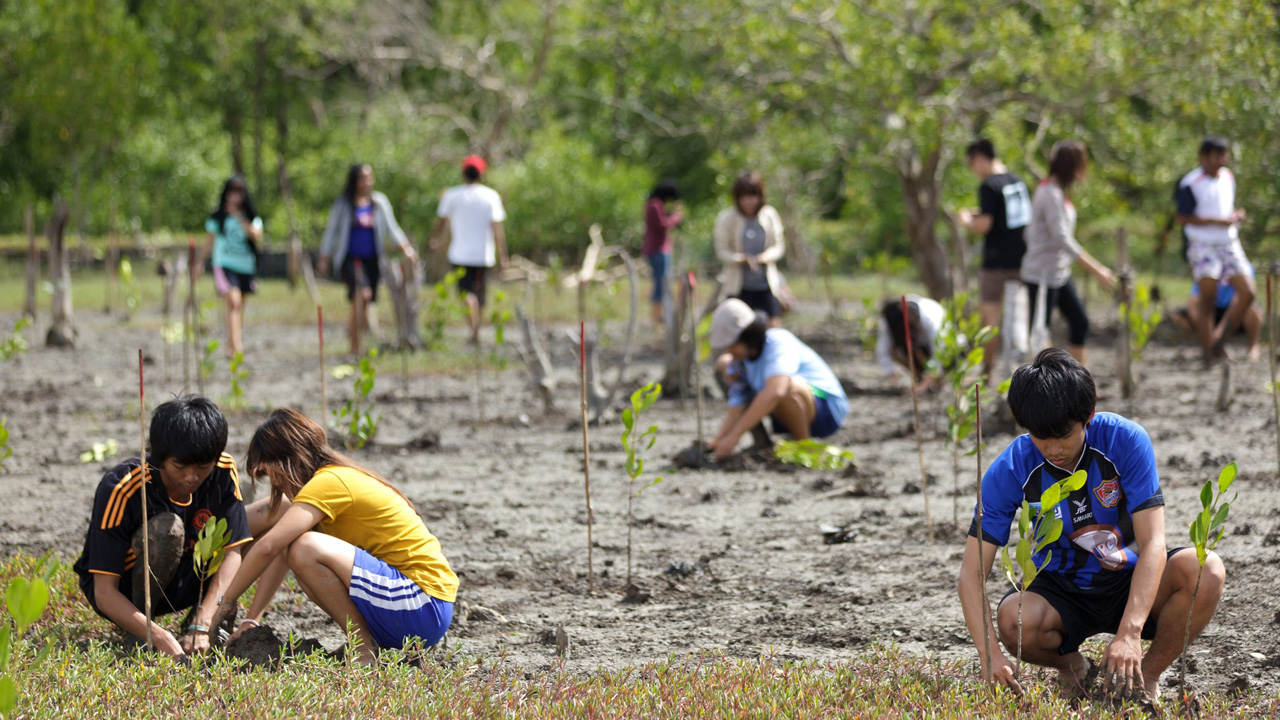
Global forest restoration initiatives are concerted efforts by governments, organizations, and communities to rehabilitate degraded landscapes. It enhances biodiversity and combats deforestation by implementing its solutions.
These initiatives aim to restore ecosystems, mitigate climate change, and promote sustainable land management practices on a large scale.
| No. | Name | Country | Institutions | Features/Aims |
| 1 | The Bonn Challenge | Global | Governments, NGOs, Private Entities | Restore 350 million hectares of deforested and degraded land by 2030. |
| 2 | New York Declaration on Forests | Global | Governments, Companies, Indigenous Groups | Achieve zero net deforestation in the supply chains of key agricultural commodities by 2020. |
| 3 | AFR100 – African Forest Landscape Restoration Initiative | African Countries | African countries, Development Partners, Private Sector | Restore 100 million hectares of degraded and deforested land in Africa by 2030. |
| 4 | Initiative 20×20 | Latin America | Various NGOs, Private Sector | Restore 20 million hectares of land in Latin America by 2020, focusing on biodiversity, sustainable agriculture, and community involvement. |
| 5 | The Great Green Wall | African Sahel Region | African countries, International Partners | Combat desertification and land degradation in the Sahel region by restoring 100 million hectares of land by 2030. |
| 6 | GPFLR – Global Partnership on Forest and Landscape Restoration | Global | Governments, Organizations, Communities | The global effort to prevent, halt, and reverse the degradation of ecosystems, scaling up restoration activities across different ecosystems. |
| 7 | One Trillion Trees Initiative | Global | Governments, NGOs, Private Sector | Facilitate the planting and restoration of one trillion trees globally, emphasizing carbon sequestration, biodiversity enhancement, and sustainable development. |
| 8 | UN Decade on Ecosystem Restoration (2021-2030) | Global | United Nations, Governments, NGOs | Global effort to prevent, halt, and reverse the degradation of ecosystems, scaling up restoration activities across different ecosystems. |
| 9 | Forest Landscape Restoration (FLR) Partnership | Global | Governments, NGOs, Private Sector | Promote the restoration of forest landscapes through collaboration, focusing on ecological, social, and economic benefits. |
| 10 | Trillion Trees Australia | Australia | Australian Government, NGOs | National initiative to restore landscapes by planting one trillion trees, addressing biodiversity loss, carbon sequestration, and ecosystem resilience. |
| 11 | Green Belt Initiative (China) | China | Chinese Government | Combat desertification by establishing shelterbelts and green corridors to stabilize sand dunes, reduce soil erosion, and enhance ecological resilience. |
| 12 | Commonland – 4 Returns Landscape Restoration Approach | Global | Commonland, NGOs, Private Sector | Emphasizes holistic landscape restoration, focusing on four returns: inspiration, social return, natural return, and financial return. Balances social, environmental, and economic outcomes. |
Research and Innovation in Combating Deforestation

Research and innovation are pivotal in developing effective and sustainable solutions to address deforestation. By leveraging cutting-edge technologies and scientific advancements, researchers contribute to the understanding of deforestation.
Remote Sensing Technologies
Advanced satellite technology provides high-resolution imagery for monitoring changes in forest cover. It aids in identifying deforestation solutions and assessing the extent of land-use changes.
- LiDAR (Light Detection and Ranging). LiDAR technology enables detailed 3D mapping of forests, aiding in accurate assessments of biomass, biodiversity, and structural characteristics.
Big Data Analytics
Integrating diverse datasets allows researchers to analyze complex interactions influencing deforestation trends. This dataset includes satellite imagery, climate data, and socio-economic indicators.
Machine learning algorithms analyze vast datasets to identify patterns and predict future deforestation risks. It enables proactive conservation measures.
Geospatial Information Systems (GIS)
GIS applications assist in spatial analysis to assess landscape connectivity and plan conservation strategies based on geographical information.
GIS-based decision support systems aid policymakers by visualizing complex spatial data, facilitating evidence-based decision-making.
Biotechnology for Reforestation
Biotechnological interventions can contribute to reforestation efforts. Such interventions include genetic modification of trees for enhanced resilience or faster growth.
Innovative microbial solutions enhance soil health, aiding in successful reforestation by promoting tree growth and survival.
Climate-Resilient Tree Varieties
Research on developing climate-resilient tree varieties enhances the adaptability of forests to changing environmental conditions.
Studying naturally resilient tree species helps identify candidates for afforestation and reforestation in the face of climate change.
Community-Based Monitoring Apps
Community-based monitoring apps empower local communities to report and document illegal logging activities. This enables rapid response and intervention technologies.
Research on the effectiveness of community-based monitoring programs informs the development of user-friendly and culturally relevant applications.
Social Science Research
Social science research explores the socio-economic drivers of deforestation. It provides insights into the motivations and behaviors of communities and industries. This aids in the exploration of deforestation solutions.
Research informs the development of effective community engagement strategies. This ensures that conservation initiatives align with local needs and priorities.
Drones for Surveillance and Reforestation
Drones provide a cost-effective means for monitoring forests. That involves identifying illegal activities and conducting rapid assessments of deforested areas.
Drone technology facilitates reforestation efforts by dispersing seed bombs in targeted areas. This practice enhances efficiency in large-scale tree planting.
Climate-Smart Agriculture Practices
Research into agroforestry systems develops innovative approaches that integrate trees with crops. It promotes sustainable land use and preserves biodiversity.
Identifying and promoting climate-adaptive crop varieties reduces the pressure on forests for agricultural expansion.
Bioeconomic Models
Bioeconomic models assess the economic value of ecosystem services provided by forests. It influences policy decisions by demonstrating the economic benefits of conservation.
Researchers conduct cost-benefit analyses of conservation initiatives, informing policymakers about the potential returns on investment in sustainable land management.
Environmental Certification Programs
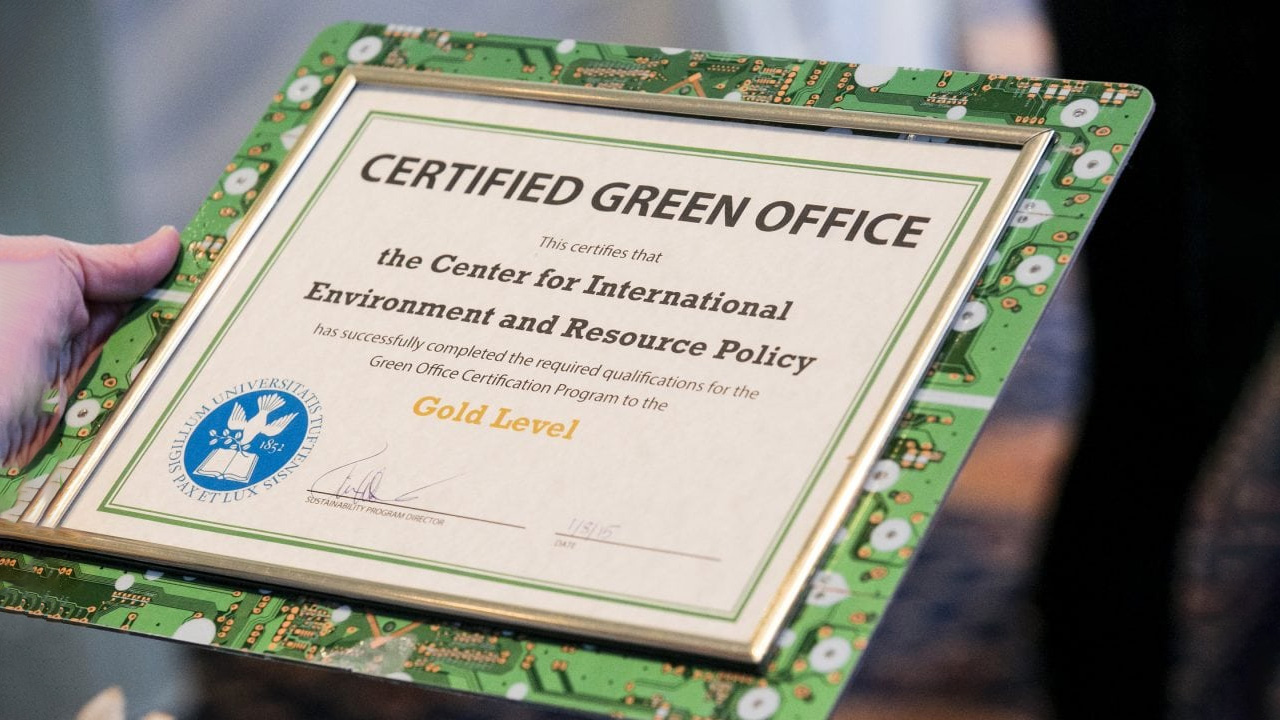
Certification programs play a pivotal role in driving sustainability and environmentally friendly practices across diverse industries. Consumers and businesses can use these certifications to make informed choices that contribute to a more sustainable and eco-friendly future.
| No. | Certification Name | Country | Institutions | Features/Aims |
| 1 | FSC (Forest Stewardship Council) | International | FSC International | Responsible forest management considers ecological, social, and economic aspects. |
| 2 | Rainforest Alliance Certification | International | Rainforest Alliance | Promotes biodiversity conservation and sustainable practices in agriculture, forestry, and tourism. |
| 3 | MSC (Marine Stewardship Council) | International | MSC | Verifies seafood products from sustainable, well-managed fisheries to protect marine ecosystems. |
| 4 | Carbon Trust Standard | United Kingdom | Carbon Trust | Certifies organizations and products for measuring, managing, and reducing carbon footprints. |
| 5 | LEED (Leadership in Energy and Environmental Design) | United States | U.S. Green Building Council | Evaluate and promote environmental performance in green building design, construction, and operation. |
| 6 | Energy Star | United States | U.S. EPA | Identifies energy-efficient products and buildings to promote energy efficiency and conservation. |
| 7 | Fair Trade Certification | International | Fair Trade International | Ensures products meet social, economic, and environmental standards, promoting fair wages and sustainable farming. |
| 8 | Cradle to Cradle (C2C) Certification | International | Cradle to Cradle Products Innovation Institute | Evaluate products for environmental and social performance throughout their lifecycle. |
| 9 | Green Seal | United States | Green Seal | Certifies various products and services based on environmental performance in categories like cleaning and construction. |
| 10 | Organic Certification (e.g., USDA Organic) | International | Various national organic certification bodies | Verifies products are grown without synthetic pesticides, herbicides, or GMOs, promoting sustainable farming. |
| 11 | Blue Angel | Germany | German Federal Ministry for the Environment | Certifies products and services with low environmental impact across various sectors. |
| 12 | ISO 14001 | International | ISO | The international standard for environmental management systems provides a framework for sustainable practices. |
| 13 | WaterSense | United States | U.S. EPA | Certifies water-efficient products and encourages water conservation in items like faucets and toilets. |
| 14 | EPEAT (Electronic Product Environmental Assessment Tool) | International | Various organizations participating in the EPEAT program | Certifies environmentally friendly electronic products based on criteria such as energy efficiency and recyclability. |
| 15 | GOTS (Global Organic Textile Standard) | International | GOTS International | Certifies textiles based on organic and sustainable criteria, covering the entire supply chain. |
Climate Change Mitigation Strategies
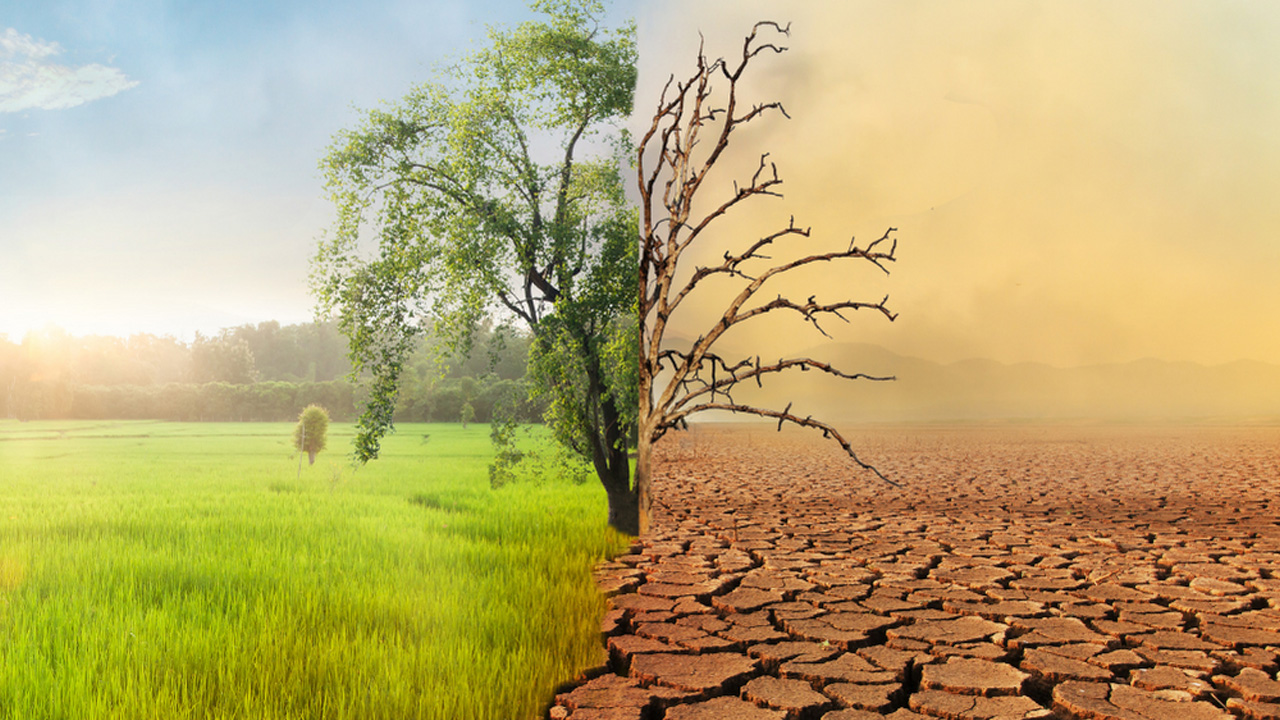
It involves actions and policies aimed at reducing or preventing the emission of greenhouse gases (GHGs) into the atmosphere. This will ultimately minimize the impact of climate change.
These strategies address various sectors of the economy and are crucial for achieving global climate goals. Here are key climate change deforestation solutions.
Transition to Renewable Energy
Accelerating the transition from fossil fuels to renewable energy sources, such as solar and wind power. It reduces dependency on carbon-intensive energy and decreases GHG emissions.
Support and investment in clean energy technologies promote innovation and make renewable energy more accessible and cost-effective.
Energy Efficiency Improvements
Improving the energy efficiency of buildings through retrofits, insulation, and energy-efficient appliances reduces energy consumption and lowers carbon emissions.
Implementing energy-efficient practices in industries, including manufacturing and production, decreases energy use and emissions.
Electrification of Transportation
Encouraging the adoption of electric vehicles and investing in EV infrastructure reduces reliance on fossil fuels in the transportation sector.
Expanding and improving public transportation options helps decrease individual car usage and associated emissions.
Carbon Capture and Storage (CCS)
CCS technologies capture carbon dioxide emissions from industrial processes and power plants. It prevents them from entering the atmosphere.
Some CCS projects involve using captured CO2 for enhanced oil recovery, providing an economic incentive for the deployment of CCS technology.
Transition to Sustainable Practices in Industry
Adopting circular economy principles reduces waste generation and promotes the reuse and recycling of materials in industrial processes.
Striving for carbon-neutral or low-carbon production methods in industries helps mitigate emissions and reduces the carbon footprint of products.
Behavioral Changes and Consumer Choices
Encouraging individuals to adopt sustainable behaviors, such as reducing meat consumption. It also involves using energy-efficient appliances and minimizing waste that contributes to overall emission reduction.
Supporting and promoting products with lower carbon footprints encourages companies to adopt sustainable practices.
Policy and Regulatory Measures
Implementing carbon pricing mechanisms provides economic incentives for businesses to reduce emissions. It involves carbon taxes or cap-and-trade systems.
Establishing and enforcing standards for the percentage of energy derived from renewables promotes the adoption of clean energy sources.
Emergency Response and Fire Prevention Strategies

Such strategies are essential components of safeguarding communities and ecosystems from the devastating impacts of wildfires.
Implementing proactive measures and effective response plans helps minimize the risk of wildfires and ensures swift. These coordinated actions when emergencies arise. Here are key strategies for emergency response and fire prevention
Fire Prevention
- Vegetation Management. Encourage homeowners to create defensible spaces around their properties by clearing vegetation.
- Public Awareness and Education. Conduct educational programs to raise awareness about fire safety, evacuation plans, and the importance of early reporting of potential fire hazards.
- Building Codes and Regulations. Enforce and update building codes to include fire-resistant materials and designs, especially in fire-prone areas.
- Early Detection Systems
- Surveillance and Monitoring. Invest in surveillance technologies, such as cameras and satellite monitoring, to detect fires at an early stage.
- Automated Alert Systems. Implement automated alert systems that rapidly notify residents of potential threats, enabling them to evacuate promptly.
- Integrated Weather Stations. Deploy weather monitoring stations to gather real-time data on temperature, humidity, wind speed, and other factors influencing fire behavior.
- Advanced Forecasting Models. Utilize advanced forecasting models to predict fire danger, allowing for proactive measures and resource allocation.
- Firebreaks and Fire Resistance
- Creating Firebreaks. Establish firebreaks to create barriers that can help contain the spread of wildfires.
- Fire-Resistant Planting. Encourage the use of fire-resistant plants and landscaping practices to reduce the risk of fire transmission.
Emergency Response
- Emergency Planning and Preparedness. Develop and communicate comprehensive emergency plans. That includes evacuation routes, emergency shelters, and communication strategies.
- Rapid Deployment of Resources. Ensure the availability of firefighting resources, including personnel, equipment, and aircraft. So that it can be rapidly deployed to contain and suppress wildfires.
- Incident Command System (ICS). Implement the Incident Command System to provide a standardized organizational structure for managing emergencies.
- Public Communication and Evacuation Procedures. Establish clear communication channels to disseminate accurate information to the public about the fire’s status, evacuation orders, and safety instructions. Develop and practice evacuation plans, ensuring that residents are familiar with routes, assembly points, and procedures.
- Air Quality Monitoring. Implement air quality monitoring systems to provide real-time information to residents and emergency responders about potential health risks.
- Erosion Control Measures. Implement erosion control measures in burned areas to prevent post-fire soil erosion and minimize the risk of landslides.
- Replanting Initiatives. Support reforestation and rehabilitation efforts to restore ecosystems and prevent further environmental degradation.
- Cross-Border Collaboration. Establish mutual aid agreements with neighboring jurisdictions and countries to facilitate the sharing of resources during emergencies.
- Technology Integration
- Unmanned Aerial Vehicles (UAVs). Utilize UAVs for aerial surveys, mapping, and monitoring fire behavior, providing valuable data to responders.
- GIS and Mapping Tools. Implement Geographic Information System (GIS) and mapping tools to enhance situational awareness and support decision-making during emergencies.
Incentives for Sustainable Agriculture
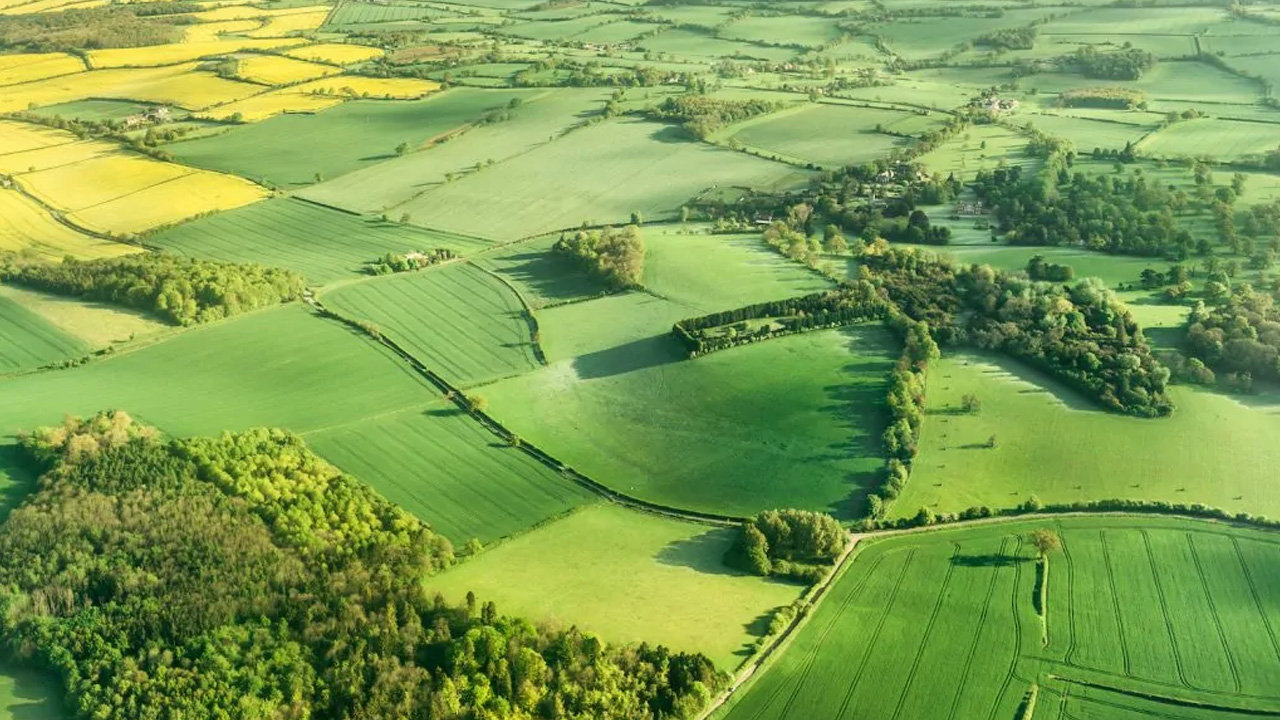
Promoting a sustainable agricultural expansion strategy is essential for environmental conservation, food security, and the well-being of rural communities.
Cultivating Tomorrow: The Evergreen Legacy of Agriculture
Agriculture generates the world’s food and materials like cotton, wool, and leather in bulk. Furthermore, it combines creativity, innovation, and a wide range of agricultural…
Governments, organizations, and communities can encourage farmers to adopt sustainable practices through various incentives. Here are key incentives for sustainable agriculture:
Financial Incentives
Provide financial support in the form of grants or subsidies to farmers who adopt sustainable practices. Also, invest in organic farming or implement conservation measures.
Offer low-interest loans to farmers engaged in sustainable agriculture. It will enable them to invest in eco-friendly technologies, equipment, and infrastructure, which will work as deforestation solutions.
Tax Incentives
Introduce tax credits for farmers implementing sustainable practices, such as organic farming, agroforestry, and soil conservation. This step will reduce their tax burden.
Allow tax deductions for farmers who make investments in environmentally beneficial infrastructure, such as water conservation systems or renewable energy installations.
Certification Premiums
Provide price premiums for agricultural products certified as organic, fair trade, or meeting specific sustainability standards. Encouraging farmers to adopt environmentally friendly practices.
Subsidize the costs associated with obtaining certifications for sustainable farming practices, making it more accessible for farmers.
Education and Training Programs
Offer subsidized or free training programs on sustainable agriculture practices, resource-efficient farming techniques, and organic farming methods. It aids in enhancing farmers’ knowledge and skills.
Strengthen extension services to provide ongoing support, guidance, and information on sustainable farming practices to farmers in rural areas.
Market Access and Development
Provide preferential treatment in government procurement to farmers practicing sustainable agriculture, ensuring a market for their products.
Facilitate farmers’ access to markets by supporting the development of local markets, connecting them with consumers, and promoting sustainable products.
Eco-Labeling and Branding
Establish eco-labeling programs that highlight and certify products with sustainable and environmentally friendly production practices, influencing consumer choices.
Support marketing initiatives that promote brands associated with sustainable agriculture, creating market demand for responsibly produced goods.
Agroecology Support
Establish research and demonstration farms to showcase the benefits of agroecological practices. It will provide practical insights and guidance for farmers.
Support seed banks preserving and promoting traditional, locally adapted crop varieties that align with sustainable agriculture principles.
Water Conservation Incentives
Provide subsidies for the adoption of water-efficient technologies to promote water conservation in agriculture. Such as drip irrigation systems and rainwater harvesting.
Implement water pricing mechanisms that incentivize responsible water use in agriculture. It encourages farmers to adopt water-saving practices.
Conservation Easements
Offer financial incentives, tax breaks, or compensation for farmers who participate in conservation easements. It preserves natural habitats and biodiversity on their land.
Establish programs that compensate farmers for providing ecosystem services. Such as carbon sequestration, water purification, and wildlife habitat preservation.
Carbon Credits and Offsets
Develop carbon credit programs that financially reward farmers for practices that sequester carbon in soils, such as agroforestry or cover cropping.
Encourage corporations and industries to invest in agricultural offset programs, where farmers receive payments for emissions reduction and environmental stewardship.
Community-Based Initiatives
Support CSA programs where consumers directly purchase products from local farmers. It provides a stable income and promotes community-supported sustainable agriculture.
Facilitate farmers’ markets and direct sales platforms, connecting farmers directly with consumers and promoting sustainable, locally produced food.
Climate-Resilient Crop Insurance
Offer reduced insurance premiums or financial incentives for farmers adopting climate-resilient agricultural practices. It mitigates the impact of extreme weather events on forests.
Establish risk mitigation programs that provide financial support to farmers affected by climate-related challenges. This will encourage the adoption of adaptive strategies in deforestation solutions.
Conclusion
The variety of ideas offered here shows the way to a more peaceful cohabitation between humans and the environment. Specifically, as we work through the challenges of deforestation solutions
Our shared commitment to sustainable practices holds the potential to halt the trend of deforestation. It involves both community-driven efforts and technical advancements.
Reforestation and conservation are not only a shared opportunity but also a responsibility to maintain a planet that is alive and supports the delicate dance of nature.
We protect future generations as well as the health of our ecosystems when we embrace a future. It holds not only resources to be exploited but also essential parts of a healthy planet.
Together, these approaches are not just about planting trees; they are about restoring ecosystems and we must hold hands in this.
Editor’s Note: I hope you liked the Deforestation Solutions. Feel free to share your thoughts in the comment section below!
